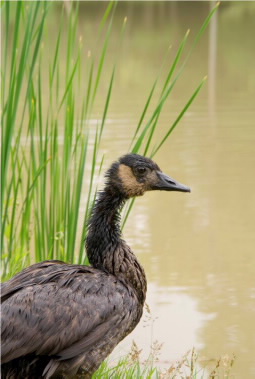EMBARGOED FOR RELEASE | August 20, 2012
New oil spill dispersant made from ingredients in peanut butter, chocolate, ice cream
Note to journalists: Please report that this research was presented at a meeting of the American Chemical Society.
PHILADELPHIA, Aug. 20, 2012 — With concerns about the possible health and environmental effects of oil dispersants in the Deepwater Horizon disaster still fresh in mind, scientists today described a new dispersant made from edible ingredients that both breaks up oil slicks and keeps oil from sticking to the feathers of birds.
“Each of the ingredients in our dispersant is used in common food products like peanut butter, chocolate and whipped cream,” said Lisa K. Kemp, Ph.D. She reported on the dispersant at the 244th National Meeting & Exposition of the American Chemical Society, being held here this week.
Media Contact
During Aug. 17-23 the contacts can be reached at 215-418-2086.
Michael Bernstein
202-872-6042
m_bernstein@acs.org
Michael Woods
202-872-6293
m_woods@acs.org
“Other scientists are working on new oil dispersants and absorbents, but nothing that’s quite like ours. It not only breaks up oil but prevents the deposition of oil on birds and other objects, like the ingredients in laundry detergent keep grease from redepositing on clothing in the rinse cycle. Birds can sit in slicks of the dispersed oil, they can dive through it and take off and flap their wings, and the oil will fall off.”
Kemp’s colleague, Robert Lochhead, Ph.D., developed the concept for the new dispersant, and the research team now has moved the material from concept to a prototype dispersant suitable for testing on actual oil spills. The team, which also includes Drs. Sarah Morgan, Dan Savin and Les Goff, is at the University of Southern Mississippi in Hattiesburg.
Lochhead said the new dispersant is based on scientific principles established decades ago during the development of modern laundry detergents. One ingredient, for instance, is a special polymer that sticks to the surface of oil droplets to keep them from sticking to the feathers of sea birds. Similar polymers in laundry detergents keep oil and grease removed during the wash cycle from getting back on clothing during the rinse cycle.
That feature in the new dispersant would be critical for minimizing damage to wildlife and beaches, Kemp noted. When detergents are used to remove oil that has coated fur or feathers, it defeats their natural waterproofing effect, leaving birds less buoyant and more susceptible to hypothermia. Birds can also eat the oil as they try to clean themselves, causing internal damage. By some estimates, almost 225,000 birds died in this way after being covered in oil from the 1989 Exxon Valdez spill off the coast of Alaska.
Another important advantage, Kemp noted, is the ease of quickly obtaining large amounts of ingredients, even ton quantities, for making the dispersant at reasonable cost. She envisioned agencies like the U.S. Coast Guard keeping small amounts on hand for first response, with larger quantities being quickly made as necessary.
With funding from the National Science Foundation (IIP-1127846), Kemp helped the group move from the prototype they had developed in the lab to a version that would be ready to be tested and approved for use with future oil spills. The group used a robotic device to quickly screen thousands of possible combinations until they settled on a winning formula. The team had support from large chemical manufacturers, including The Dow Chemical Company, Archer Daniels Midland Company and Croda International for ingredient selection and supply. In order to move to commercialization of this technology, it will now be necessary to seek partners and end-use customers with interest in testing the product.
To automatically receive news releases from the American Chemical Society contact newsroom@acs.org.
###


